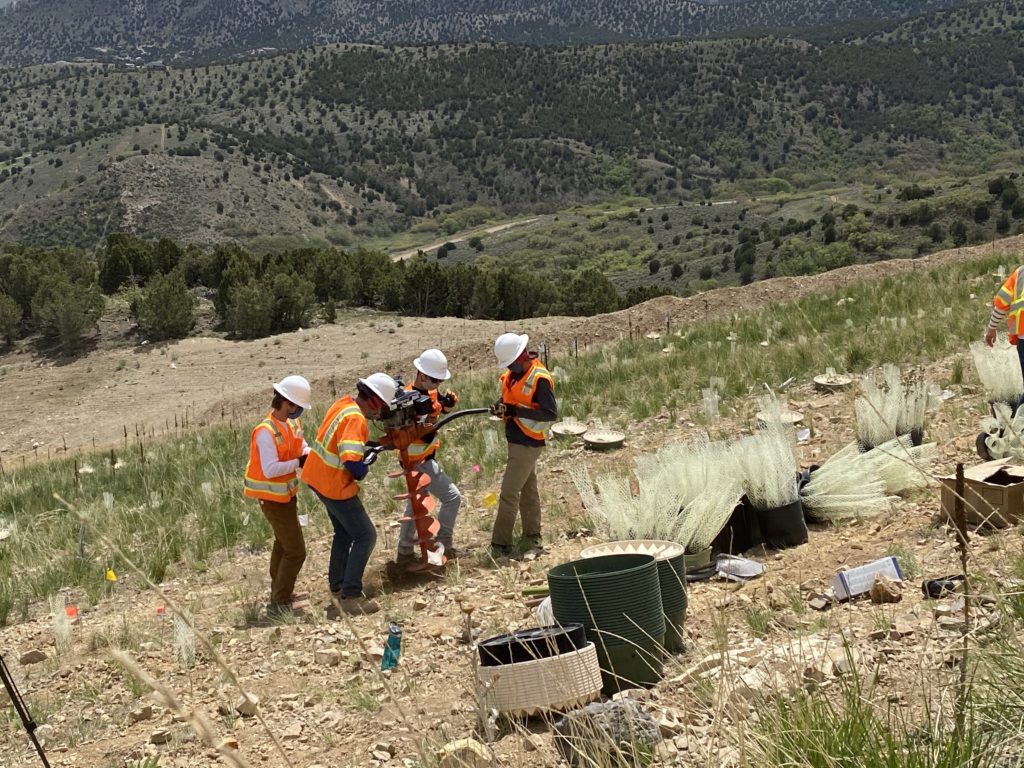
Rio Tinto Kennecott announced it is reclaiming 740 additional acres of land at the Bingham Canyon mine in a commitment to the environment and the local community. The East Waste Rock Reclamation project entered its third phase this summer and is expected to last through 2028.
This latest phase of the reclamation process includes softening the grade of approximately 12.4 million cubic yards of waste rock that was created during mining, covering it with 3.7 million cubic yards of top soil, and planting 23 varieties of natural grasses and shrubs native to the area.
Bingham Canyon, 30 miles south of Salt Lake City, Utah, has been mined since 1906. The mine has produced more copper than any mine in history – more than 19 million tonnes. Rio Tinto bought Kennecott in 1989 and invested more than $2 billion in modernizing the mine and another $450 million to clean up historic workings and ground water.
Bingham was designated a National Historic Landmark in 1966. A massive landslide occurred at the mine in April 2013.
Rio said this restoration process enhances biodiversity on the remediated land and improves the appearance of the mine for residents of Salt Lake Valley.
“Rio Tinto Kennecott is committed to leaving a lasting legacy with our neighbors that have shared our history for over 120 years now,” Rio Tinto Kennecott Managing Director Nate Foster said in the statement.
“We’re investing in restoring hundreds of acres of land back to its natural beauty in areas we no longer need for active mining, as part of our long-term commitment to be responsible stewards in our community.”
Phase 1 of the project lasted from 2018 to 2020 and reclaimed two waste rock lifts, or levels. Phase 2 ran from 2021 to 2022 and reclaimed three waste rock lifts, and now Phase 3 will fully reclaim the remaining East Waste Rock lifts to complete the project, the miner said.
This reclamation was included in the permitting through the Utah Department of Oil, Gas, and Mining and the Division of Water Quality.
On completion of Phase 3, the improvements to the East Waste Rocks will also help maintain critical erosion control, which will positively impact stormwater management in the area.